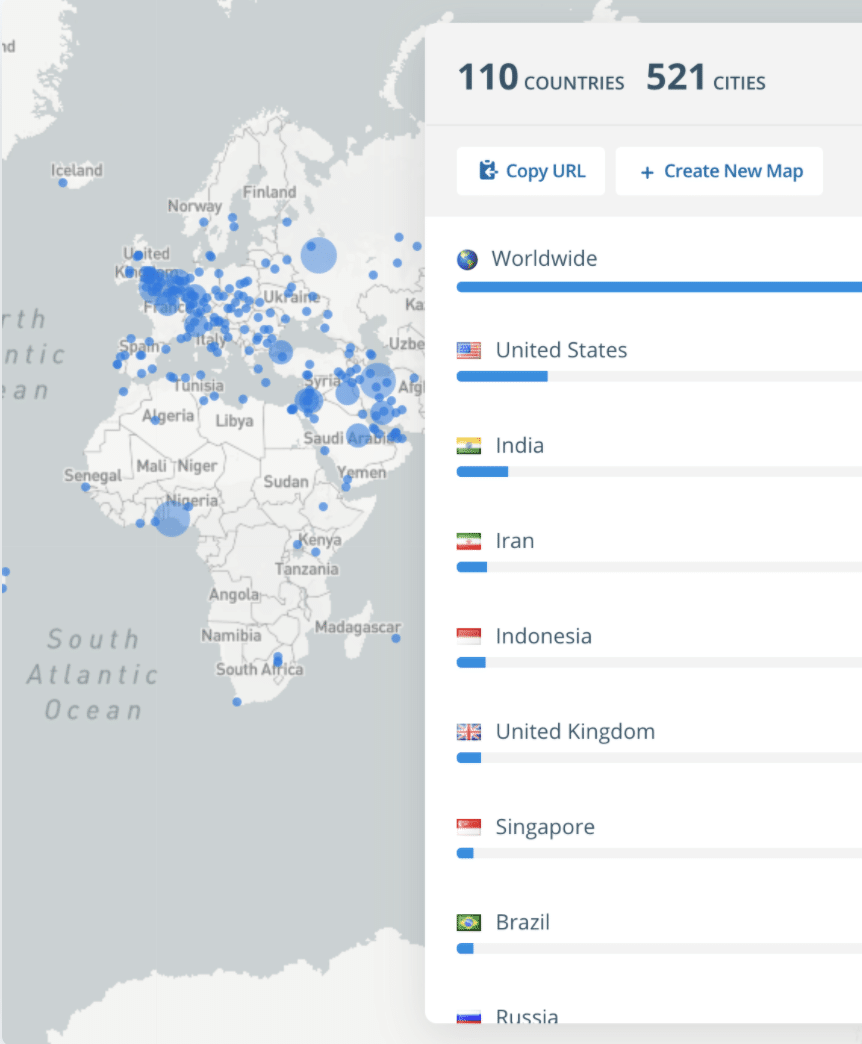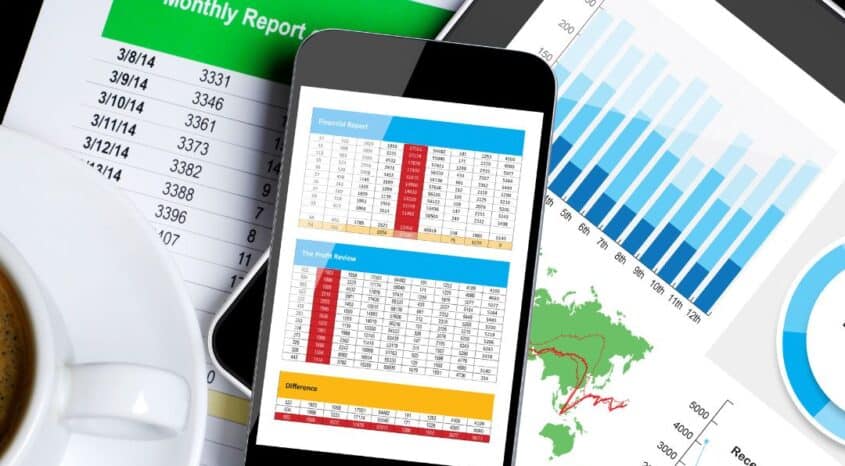Ecommerce sites have never had so much visibility over buying trends. While these insights can fuel better customer experiences, the challenge is turning this data into a usable commodity.
Consider this: Big Data grows by an estimated 2.5 quintillion bytes every day. Not surprisingly, outdated data costs businesses an average of $15 million each year.
The good news is that many Ecommerce companies have accessible insights.
What is good data?
As was already mentioned, the sheer quantity of data produced every day means that not all data is of equal value.
Plus, depending on your context, you may need in-house insights that nobody else has. That means you may have some datasets that aren’t mentioned in this article. But if they help you hone the customer experience, they may be worth using.
In other words, don’t shy away from those insights. But before diving into specific datasets and tips, here are several ways to determine what data is worth using.
1. Accurate
Perhaps this goes without saying, but data is only as valuable as it is accurate. The more you can improve the accuracy of customer information within your databases, the more you can trust those insights to guide your marketing decisions.
2. Unique
Duplicate data is also a problem. Sometimes different data feeds cause duplicates. Other times, it’s human error or a system error. But either way, say you have several records of the same customer. That’s going to affect customer experiences and team efficiency along the way.
3. Complete
Incomplete data causes partial visibility. The more data fields completed in a CRM, for instance, the more that sales and marketing teams can do with customer trends. In short, if you’re noticing that your brand has original datasets, you can make these insights more usable by continuing to fill out data fields.
Benefits of using your own data
In-house datasets are valuable for several reasons. For starters, you already own this information. You don’t have to pay to get it. Plus, it’s more accessible than you might think.
As an added bonus, your in-house datasets are something your competitors don’t have. It’s a proprietary tool that no one else gets to use. These resources are one way to build brand authority in a way that’s authentic and unique to your company.
From a marketing perspective, consumer data is also one of the best ways to understand your target audience. The result? Better communication. Cost-effective and unique datasets help create the right messaging for your customers.
Challenges for data-fueled marketing
Silos challenge data usability. In marketing, sometimes marketing channels keep teams from seeing trends. For instance, social media platforms and website analytics work together to create better messaging.
Ecommerce sites that also have physical locations often have different databases to store online customer data and in-person data. That’s why many brands are moving towards CRMs that help manage and improve customer relationships for online retail shops.
CRMs also help break down data silos for marketing teams. In fact, many of the in-house datasets in this article are accessible through a reliable CRM.
1. Gather customer attributes
If you have basic facts about your customers, then you have data you can use. Here are some customer attributes that can fuel better marketing.
- Contact details
- Demographic information
- What your customers like
- What they dislike
- What lifestyle they live
Data that sits in a database isn’t going to change customer experiences. So here’s the first tip of in-house data to fuel better Ecommerce Marketing.
Tip #1: Segment your audience
Personalization. It’s what buyers expect these days. With customer attributes, businesses can use this information to automate personalization at scale.
Say you want to reach new leads with personalized offers and deals via email. The more you segment, the more you can pinpoint what they value. What does this do for Ecommerce brands? It’ll increase the likelihood that they’ll shop with you… by over 90 percent.
2. Analyze behavioral data
Using third-party cookies, Ecommerce sites can track browsing trends among their buyers. This includes the sites they visit, web searches, and browsing trends.
It’s important to note, however, that most browsers are planning to eliminate third-party cookie data collection by the end of 2023. But until then, this data is very helpful. And when that data stream dries up, there are some great alternatives mentioned below.
Plus, website analytics show what pages each customer views, how long they stay on each page, what links they click on, and more. These behavioral datasets reveal motives, decision-making procedures, as well as buying habits.
All this to say, these insights help marketing teams connect buyers with the right product or service.
Tip #2: Make better predictions about your buyers
Using your in-house behavioral data, you can make better predictions to pinpoint high-quality leads.
For instance, new site visitors may exhibit similar behaviors to other loyal customers. Marketing teams can use this information to personalize offers and communication accordingly.
Additionally, marketing teams can offer customized recommendations. All of these opportunities simply by using trends exhibited by your site visitor.
3. Don’t forget email metrics
Email marketing, the metaphorical granddaddy of all marketing, often reveals a lot about your messaging. For instance, open rates, bounce rates, and click-through rates tell a pretty great backstory about compelling marketing.
You can also track engagement over time. Email marketing shows trends about what your audience values, what messaging they respond to, and where you might be wasting marketing dollars.
Tip #3: Hone your cross-channel marketing messages
With the metrics you gather from email marketing, you can improve SMS messages, direct mail, social media communication, and more. The result is that customers receive a unified experience when interacting with your brand.
(Bonus tip: You can also merge email insights with transaction data (mentioned below) to further opportunities for engagement. Let’s say, for instance, that a customer purchases a product. A few days after the initial receipt of purchase, Ecommerce brands can send an automated email asking them to review the item they bought.)
4. Pay attention to customer feedback
Buyers want to have a voice. On the company side, positive feedback is always appreciated. Negative feedback? Not so much.
The reality is that less-than-positive feedback is an opportunity for marketing teams. Customer service calls are a chance to take an already good product or service and make it even better. And when it comes to online reviews, it’s also an opportunity to show customers that you’re their advocate.
In short, the information you learn from customer feedback is data you can use.
Tip #4: Polish the customer experience
Take a scenario where an Ecommerce company receives multiple complaints from buyers. They’re unhappy about the price, inconvenience, or failure of shipping and handling policies. These insights can help you polish the online buying experience.
- Do they want more options for shipping and handling?
- Would they rather pay more for an item to get more reliable shipping and handling?
- Do your qualified leads appreciate a website that highlights free shipping policies?
In other words, customer feedback is a valuable data feed to help you improve brand loyalty.
5. Leverage your anonymous data
Before your customers ever get your lead magnet, try out your free tool, or sign up for newsletters, they leave a trail of valuable data. IP address data is the anonymous information your website visitors bring with them.
Unlike third-party cookies, IP address data does protect the privacy of your users. Plus, it also reveals insights such as these:
- Detecting site visitors’ geolocation
- Understanding user intent
- Leveraging anonymous leads
- Unmasking user’s identities
As mentioned above, IP addresses point to general locations such as countries, regions or states, cities, postal codes, and more.
Tip #5: Customize your messaging based on visitors’ IP address
Ecommerce marketing teams can use this anonymous data in several ways:
- Create pinpointed messaging based on each culture
- Use imagery that relates better to customers
- Prefill online forms
- Show the correct language for each visitor
- Adjust pricing information based on the currency
Additionally, marketing teams can use these insights to create custom discounts and ads. Say, for instance, that an Ecommerce brand wants to offer a New Year’s offer for customers. Many countries celebrate on January 1 every year. But the Chinese New Year changes dates from year to year based on the lunar calendar.
IP address data can be used to pinpoint the country of each visitor. Then they can offer the right discount on the right day. All of this from anonymous site data.
As was already mentioned, there are many other applications of IP address data for Ecommerce sites. It can improve location-based pricing, correct currency, shipping policies, and secure transactions.
6. Follow the transactional data
Much like behavioral trends, transactional insights help companies understand their buyers. Ecommerce brands can alter their marketing based on this data.
Transactions reveal where customers bought items. Additionally, this data shows how much each customer bought. It can also help brands discover new uses of their products. As a result, they can explain the value of their product or service to site visitors.
On the more technical side, these datasets can help companies develop adaptive behavioral algorithms to help automate positive customer experiences.
Your existing transactional data can improve targeted campaigns and conversion rates.
Tip #6: Discover what marketing strategies influenced conversions
These insights can help teams draw connections between marketing campaigns and high-quality conversions. By knowing how much customers are spending, brands can pinpoint what they value and what they want. Using this data, you can improve your marketing performance and optimize your messaging.
Resources for using your in-house data
If you’re looking for tools (including some free options) to help you use your data better, here are a few recommendations.
Data Cleaning
Need to clean up your data? Ringlead helps improve data quality. The result? You can rely on those insights for sales and marketing decisions. Their system helps improve your ROI and efficiency so you reach the right leads.
Website Analytics
Google Analytics is a well-known tool to help optimize websites. Plus, it’s free. You can easily view website metrics such as the amount of time spent on each page, bounce rates, and much more.
Retail CRMs
CRMs aren’t hard to find these days. But discovering one that understands the unique challenges of the retail industry isn’t as easy. Brightpearl’s CRM combines the best of customer relationship management with a retail-optimized platform.
IP Address Lookups
If you want to start testing IP address data, there are plenty of providers out there. IPinfo is a provider that offers free IP address lookups up to 50,000 per month. Plus, they have free tools and other resources to test the quality of their data.
A/B Testing
Gather more insights from your website traffic with Optimizely. They help companies test their messaging to create the best digital experiences for customers.
Behavioral Analytics
And last but not least, Mixpanel helps customers gather behavioral analytics. You can gather data from mobile apps to websites. If you like data details, Mixpanel can help you see how your users are interacting with your site, down to the very buttons and features they use. Plus, Mixpanel has a free version that allows you to test their analytics.
Marketing is a powerful tool to retain and engage customers. The future will likely bring more and more data fueled marketing. But you don’t have to wait until then. Ecommerce brands can use in-house datasets right away. Your existing data may be more than enough to begin optimizing your marketing strategies.







